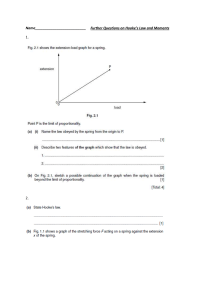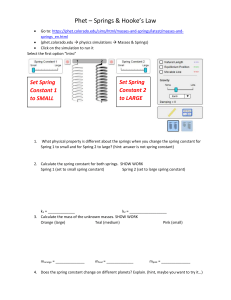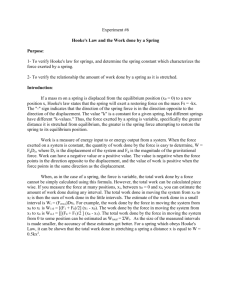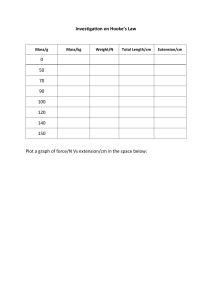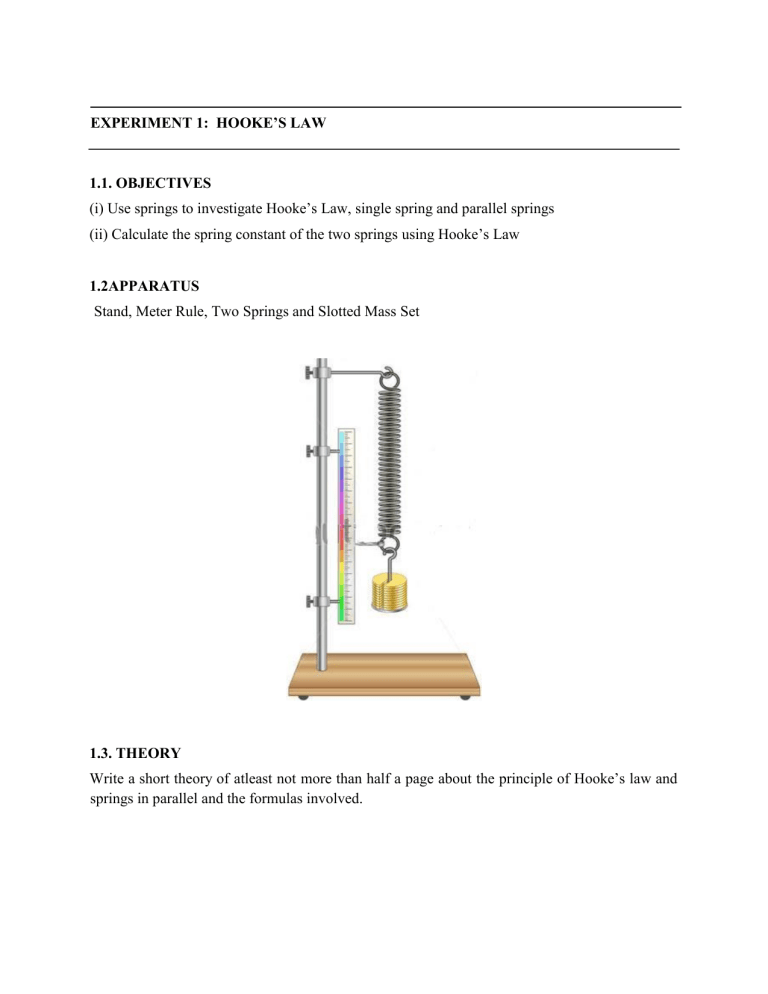
EXPERIMENT 1: HOOKE’S LAW 1.1. OBJECTIVES (i) Use springs to investigate Hooke’s Law, single spring and parallel springs (ii) Calculate the spring constant of the two springs using Hooke’s Law 1.2APPARATUS Stand, Meter Rule, Two Springs and Slotted Mass Set 1.3. THEORY Write a short theory of atleast not more than half a page about the principle of Hooke’s law and springs in parallel and the formulas involved. 1.4 PART 1 : Single Spring Objective: Calculate the spring constant of a single spring using Hooke’s Law. Setup Choose one of the springs and suspend it from the horizontal arm of the stand. Attach the mass hanger (no additional mass) to the bottom of the spring. This will cause the spring to stretch. Procedure 1. Successively add additional mass to the hanger and each time measure the total length l of the spring (once the spring has come to rest). 2. Record you results in a table with the following format. Note: m is the total mass you have added to the spring (including that of the hanger). No. 1. 2. 3. 4. 5. 6. Mass m (g) Length of spring l (cm) Calculations 1. Draw a graph of l (y-axis) vs m (x-axis) including steep and shallow fit lines. 2. Using Hooke’s Law mg = kx calculate the spring constant from the slope of the graph the corresponding uncertainty in the value of the spring constant using the steep and shallow fit lines on your graph. x is the extension of the spring. 3. Repeat the procedure and calculations for the second springs. Record your results in a table with the following format. Pay particular attention to the uncertainty and units of your results. K1 K2 1.5 PART 2 : Springs in Parallel Objective: Verify that two springs in parallel have an effective spring constant given by (1) Setup Using the same two springs from section 1 attach them both to the horizontal arm of the stand, leaving some horizontal space between them. Now place a thin rod through the lower ends of both springs. Attach an empty mass hanger to the center of this thin rod. The mass of the hanger will cause the thin rod to stretch the two springs until they have equal stretched lengths. Procedure 1. Follow the procedure from section 1 to create a table and a graph of l vs. m. Calculations 1. Use your graph to calculate the effective spring constant k parallel of the two parallel springs. 2. Compare your answer to the expected value from equation (1) by calculating the percentage difference between the two values. Note: The percentage difference between any two values x1 and x2 is defined as (2)


